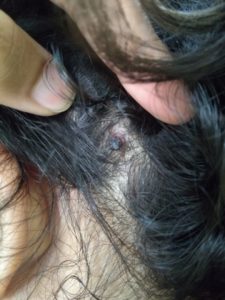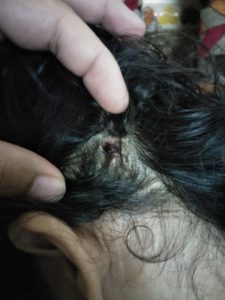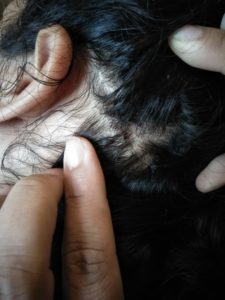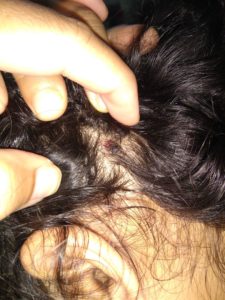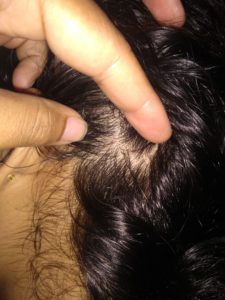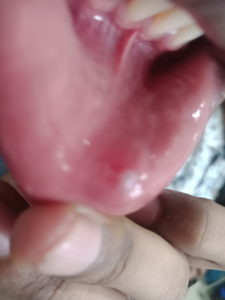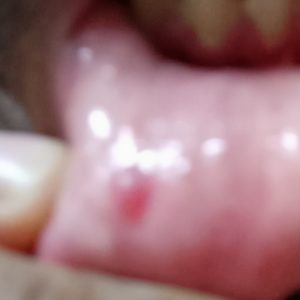Dysmenorrhoea is one of the commonest gynaecological condition that affects the quality of life of many women in their reproductive years.
Although it is not a serious medical problem. Usually menstrual cramps are a common problem for adolescent girls and women.
The menstrual symptoms are severe enough to keep her away from functioning at work or school for a day or two each month.
WHAT IS DYSMENORRHOEA?
Dysmenorrhoea is also known as painful periods or menstrual cramps.
It refers to pain occuring before or during menstruation or both. It is commonly reffered to as period pain or menstrual cramp.
TYPES OF DYSMENORRHOEA :
PRIMARY DYSMENORRHOEA
Primary dysmenorrhoea is a type where there is no underlying gynaecological disorder but is related to normal process of menstruation.
It is the most common type affecting more than 50 % of women.
This type is common in early 20’s or adolescent.
Fortunately for many women the problem eases as they mature, particularly after pregnancy.
SECONDARY DYSMENORRHOEA
In secondary dysmenorrhoea the pain is generally related to some kind of gynaecologic disorder.
Most of these disorders can be easily treated with medicines.
This type is more likely to affect during late adulthood.
CAUSES OF DYSMENORRHOEA :
Menstrual cramps occur because of contractions in the uterus or womb.
If the contractions are too strongly during menstrual cycle, it can press against the nearby blood vessels causing pain.
PRIMARY DYSMENORRHOEA :
It is thought to be caused by excessive level of prostaglandin hormones which is responsible for constraction during menstruation and child birth.
Factors that make the pain of primary dysmenorrhoea even worse include a heavier or irregular menstrual periods., lack of excercise, psychological or social stress, obesity, a positive family history of dys menorrhoea.
SECONDARY DYSMENORRHOEA :
Secondary dysmenorrhoea may be caused by a number of conditions.
Endometriosis : fragments of endometrial lining that are found on pelvic organs.
Fibroids: they are benign tumors that develop within the uterine wall.
Pelvic inflammatory disease: Infection of the fallopian tubes,.ovaries,.uterus and cervix.
Ovarian cys or tumours.
SYMPTOMS OF DYSMENORRHOEA :
The main symptom which the patient presents with is Pain.
The pain is usually present in the lower abdomen during menstruatution, with pain in the hips, lower back, thighs.
The pain usually starts shortly before or at thr begining of menstrual period.
Pain increases around 24 hours after start of menstrual bleeding and usually subsides after 2 to 3 days.
It usually presents Congestive or spasmodic type of pains.
Other symptoms include
- Nausea
- Vomiting
- Diarrhoea
- Headache
- Fatigue
- Mood swings
- Irritability
- Anxiety
DIAGNOSIS
Diagnosis of dysmenorrhoea can be usually made based on the presenting complaints and history of the patient. When the symptoms are severe, pelvic examinatiom or an Ultrasound may be advised to rule out any underlying pathology.
HOMEOPATHIC APPROACH IN DYSMENORRHOEA.
Homeopathy is very beneficial in the treatment of dysmenorrhoea. The selection of homeopathic medicine is based on detailed case history and analysis of the patient. The aim is not only to treat pain but to also address the underlying cause of the complaints.
HOMEOPATHIC MEDICINES COMMONLY INDICATED IN DYSMENORRHOEA ARE AS FOLLOWS
MAGNESIUM PHOSPHORICUM
Mag phos is one of the most indicated remedy for dysmennorhoea. The pains calling for it are neuralgic, crampy preceeding the flow and great indication for the use of this remedy is the relief from warmth and aggravation from motion. Uterine engorgements with characteristic crampy pains indicate this remedy.
PULSATILLA
Pulsatilla is indicated in case of dysmenorrhoea. The menses are dark in colour and delayed, the flow is sacnty with severe pain, with great chilliness. The pains gripe and double the patient up. Indicated in congestive and spasmodic type pain.
CIMICIFUGA
The characteristic indication of this remedy is dysmennorhoea. Pains flying accross the pelvic region from one side to other. It is especially useful im neuralgic and rheumatic cases. Headache preceeding menses., during mesnses sharp pains across abdomen has to double up, labor like pains with debility and scanty flow.
SEPIA
Indicated in case of dysmenorrhoea. Weak uterus, with bearing down senasation as if the organs would fall out must cross her legs. Menses delayed, sacanty, irregular, early or profuse. Violent pains upward in the vagina. Irritable tired and chilly. Desires sour food. Aggravation from cold and relieved from warmth.
SABINA
Indicated in dysmenorrhoea where there are severe cramps which extend from low back to pubis, also extends from uterus to thighs. Blood is bright red with clots. Shooting pains up in the vagina relieved by lying flat on back with extended limbs.
COCCULUS
Indicated in case of dysmenorrhoea in women who have cramping or pressing type of pain in the pelvic or abdominal region along with weakness and dizziness. Presents with headache and nausea, feeling of numbness of the body. Worse from standing or any exertion and relieved by lying down.
LILIUM TIG
Indicated in case of dysmenorrhoea which includes menstrual irritabilty and cramping pain with bearing down feeling during periods. The women may need to sit with crossed legs. Worse from strong emotions or excitement and better from fresh air.
BELLADONA
Indicated in case of dysmenorrhoea where the symptoms are very intense and come and go suddenly accompanied by a feeling of heat. The mesntrual flow is typically bright red, profuse and may have to begin too early with cramping pain worse from jar and touch, yet applying steady pressure relieves the patient. Aggravation from walking or bending.
COLOCYNTH
Colocynth is indicated in case of dysmenorrhoea. Presents with menstrual colic. Menstrual blood is dark red often with clots. Menstrual colic where relief comes from bending double or pressure applied by hand. Patient is very nervous.
CAULOPHYLLUM
Caulophyllum is indicated in case of dysmenorhoea where the patient presents with spasmodic pains. Bearing down pain. Continous spasms of uterus. Pain in the lower abdomen, back extending to thighs. Spasmodic pains in between periods.
FEW WAYS TO EASE THE MENSTRUAL PAIN.
- Doing mild exercise like stretching, walking or cycling. Exercise improves blood flow and helps to reduce pelvic pain.
- Take a warm bath
- Holding a heating pad or hot water bag on lower abdomen or back wil help to ease the pain.
- Avoid stress, practice yoga, meditation.
- Avoid fatty and oily food.
- Healthy and fibrous diet with plenty of water helps to ease the symptoms.



